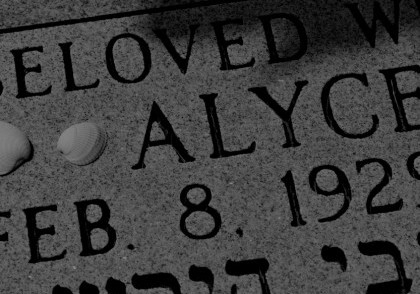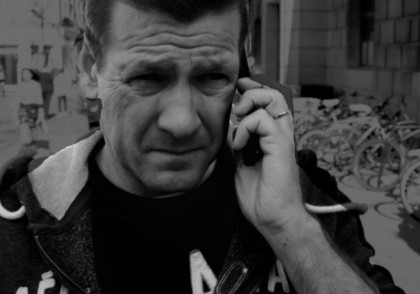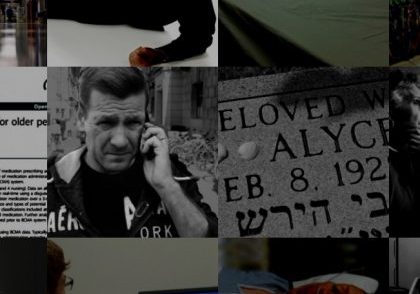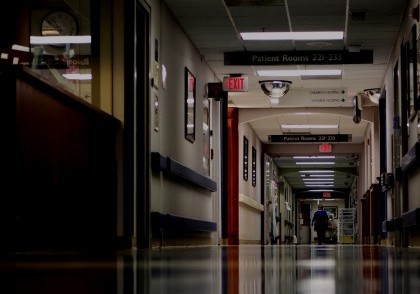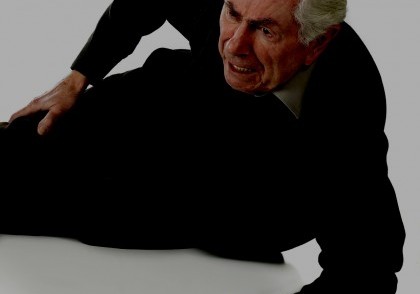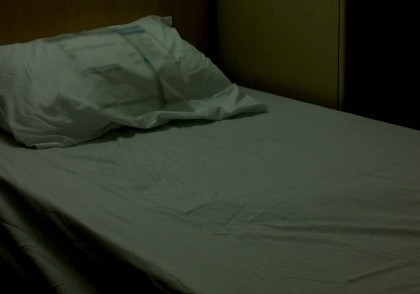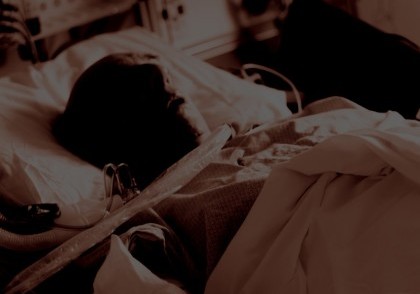BEDSORE LAWSUITS
If your loved one has been the victim of abuse or neglect and has developed bedsores as a result, you may decide to hold the person or entity responsible for your loved one's injury accountable for their negligent actions by filing a personal injury lawsuit. Entering into the legal process can seem daunting and you may have questions about how a personal injury lawsuit works as well as how you can receive compensation. Dalli & Marino, LLP, are attorneys who specialize in cases surrounding, and advocates for. the elderly and their families in cases of neglect or other mistreatment in hospitals, nursing homes and other care facilities.
Statute of Limitations for Bedsore Claims
When you are seeking to file a personal injury claim, it is important to be aware that the law limits the amount of time that an individual has to file a lawsuit. This deadline is called the statute of limitations. The length of the statute of limitations varies depending on the claim at issue. In general, in New York, you have three years to file a personal injury lawsuit if the claim is for negligence. However, if a claim involves medical malpractice then the statute of limitations is shorter, generally two and a half years from the end of treatment by the doctor or hospital that committed the malpractice. Each case is different and a different statute of limitations may apply. If you have questions about the timeliness of your claim you are well served to contact an attorney.
The Process Of A Bedsore Lawsuit
While all lawsuits have their own unique set of facts, in general, they progress in a similar manner. A complaint is filed, discovery is conducted, settlement negotiations take place, and if no agreement is reached, the case goes to trial. This section will look at each of these steps in more detail. Of course, just because a case is filed there is no guarantee there will be a recovery.
Pre-Trial
Filing A Complaint
In order to initiate a lawsuit, the person bringing the lawsuit -- called the plaintiff -- files a complaint in the proper court. A complaint is "[t]he initial pleading that starts a civil action and states the basis for the court's jurisdiction, the basis for the plaintiff's claim, and the demand for relief." Black's Law Dictionary 323 (9th ed. 2009). The complaint is served on the person or entity from whom compensation is sought -- called the defendant. The defendant then has an opportunity to respond by filing an answer. An answer is "[a] defendant's first pleading that addresses the merits of the case, usually by denying the plaintiff's allegations." Id. at 107. In addition, "[a]n answer usually sets forth the defendant's defenses and counterclaims." Id. After these documents are submitted and exchanged, the case moves to the discovery phase.
In lieu of an answer, a defendant may file a motion to dismiss instead. If this occurs, then the plaintiff will file a response to the motion and a hearing will be held. At the hearing each party will argue why the case should or should not be dismissed and the judge will make a ruling. If the judge does not decide to dismiss the case, then the defendant will file an answer and the case will move to the discovery phase.
Discovery
The discovery phase of litigation is where each party builds their case and learns information from the other side through various discovery tools. The most common methods of discovery used are:
- Interrogatories
- Requests for Production (of documents, photos, etc.)
- Request for Admission
- Depositions
Discovery takes time to complete. The length of time that this phase lasts depends on a number of factors. For example, the discovery in a more complex case will take a longer amount of time to complete than a simple case. In addition, the discovery phase can also last a greater amount of time if there are a lot of disputes over evidence or witnesses. For example, if the plaintiff requests a document and the defense objects to producing that document, then the parties may have to go before a judge so the judge can decide if the document should be produced.
Once discovery has been completed, the case will move to trial. This can take several months or even years depending on where the case is filed.
Settlement Discussions
One thing about which most people may not be aware is that many cases are not decided at trial. The vast majority of civil cases end in a settlement agreement. Settlement discussion can occur throughout the litigation process. This agreement can be reached through settlement negotiations that are conducted by the parties or by going through mediation. Mediation is "[a] method of nonbinding dispute resolution involving a neutral third party who tries to help the disputing parties reach a mutually agreeable solution." Id. at 1070. If an agreement cannot be reached through these dispute resolution methods, then the case may proceed to trial.
Trial
Most trials follow the same general format. The plaintiff will go first and make his or her case for the jury by putting on evidence and questioning witnesses. The plaintiff will try to show, by a preponderance of the evidence, that the defendant should be held liable for the plaintiff's injuries. Once the plaintiff has completed his or her presentation of the evidence, it is the defendant's turn. The defendant will then make his or her case for why he or she is not responsible for the plaintiff's injuries. After both sides rest, each party has the opportunity to make a closing argument.
The case then goes to the jury, who deliberates. Once the jury has reached a verdict, it is read to the court, and the plaintiff will learn whether or not the defendant will be held liable and what damages the jury has decided are appropriate.
Bedsore Damages
One thing that you may be wondering when deciding whether or not to file a lawsuit against a negligent caretaker is what your loved one can be compensated for. Can your loved one recover damages for the extensive medical bills that have been racking up? Can your loved one recover any compensation for the considerable pain and suffering he or she has endured? Can you make the person or entity pay damages because their behavior was egregious?
The answer is, it depends. What damages are recoverable in a case will depend on the facts and circumstances of that particular case.
Damages can be broken down into two categories: compensatory damages and punitive damages. Compensatory damages are meant to compensate the plaintiff for the harm he or she suffered and the losses he or she incurred as a result of the defendants negligence. This category includes things like medical bills, lost wages, and pain and suffering. Punitive damages, by contrast, are not meant to compensate the plaintiff. Rather punitive damages are used to punish the defendant for past reprehensible behavior and to deter any similar behavior in the future. It is important to note that punitive damages are only available in certain instances when a defendant's behavior was particularly willful or egregious.
Contact An Elder Abuse Attorney
If you or a loved one has been the victim of elder abuse, either through neglect in a nursing home or another type of negligent care, please do not hesitate to contact the law firm of Dalli & Marino, LLP. Our attorneys have extensive experience in the entire discipline, and, in cases and the law surrounding Bedsores, and are dedicated to helping our clients recover just compensation for their injuries. You can call our office today at 888 465-8790 or complete our online form.
Case Study – [MC]
“But for that dosing error… Mom would still be with us.” DATELINE…
Case Study: Wrongful Death
Nursing Home Abuse: Case Study 19: Wrongful Death in a Nursing Home
Case Study: Nursing Home Abuse — From a Distance
You can’t be there every minute. But what of the warning signs for nursing home abuse?
Cases of Nursing Home Abuse
Review our portfolio of case studies covering numerous aspects of nursing home abuse: falls, bedsores, over-medication, neglect.
Case Study: Where is Everyone?
Nursing Home Abuse Case Study: Understaffing or neglect in a nursing home can cause severe loneliness, depression, loss of appetite or ignore health warning signs.
Case Study: Nursing Home Falls
Nursing Home Abuse: Despite best practices intended to reduce the incidence of falls, they remain a common cause for nursing home injuries.
Case Study: It Starts with Bruising
Nursing Home Abuse: Bedsores caused by neglect
Case Study: Nursing Home Bedsore
Nursing Home Abuse: Bedsores can lead to fatal complications, including organ failure and even cancer.
Case Study: I Never See A Doctor When I Request One
Nursing Home Abuse Case Study: Patients fail to receive prompt attention from nursing home physicians.
Case Study: Medication Error
Nursing Home Abuse Case Study: A medication error leads to dangerous health complications or death.
